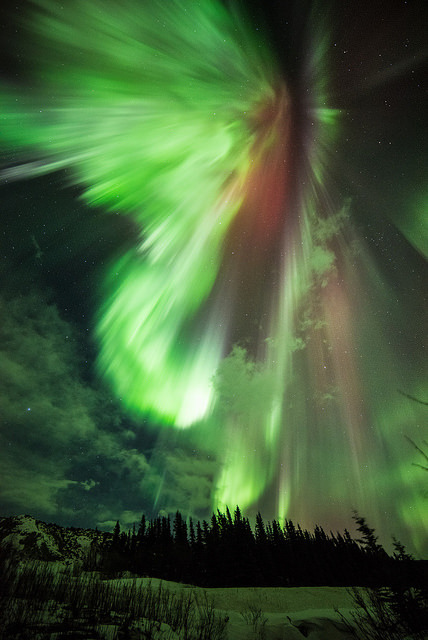Some Basic Science 🤓
Some basic science 🤓
Astronomy and Astrophysics: Facts
Here is a list of some curiosities of astronomy and astrophysics. From our solar system to interstellar space.

Mercury is shrinking: It’s small, it’s hot and it’s shrinking. A NASA-funded research suggests that Mercury is still contracting today, joining Earth as a tectonically active planet.

Stellar neighbor: Proxima Centauri is a red dwarf, a small low-mass star, about 4.25 light-years (1.30 pc) from the Sun in the constellation of Centaurus. Proxima Centauri is the nearest star of the Sun that is known and at first can only be seen from the Southern Hemisphere.

A heavy star: 5 milliliters, or one teaspoon of neutron star material, equals the weight of about 900 Great Pyramids of Giza. One sugar cube equates to 100 billion tons. A cubic meter? The entire weight of the Atlantic Ocean. With an escape velocity of 100,000 km/s (Earth’s is a puny 11.3 km/s), a fall from 1 meter above a neutron star would only take one microsecond, and you would impact at around 2000 km/s, or 7.2 million kilometers per hour. This force would destroy all your component atoms, rendering all your matter identical. Fortunately, the closest neutron star is rather far away (about 400 light-years), so I wouldn’t be too concerned about the aforementioned event.

Asteroid belt: The asteroid belt is the circumstellar disc in the Solar System located roughly between the orbits of the planets Mars and Jupiter. It is occupied by numerous irregularly shaped bodies called asteroids or minor planets. About half the mass of the belt is contained in the four largest asteroids: Ceres, Vesta, Pallas, and Hygiea. The total mass of the asteroid belt is approximately 4% that of the Moon, or 22% that of Pluto, and roughly twice that of Pluto’s moon Charon (whose diameter is 1200 km).

Sunlight Takes Around 8 Minutes To Reach Earth: The Earth is located 93 million miles (150 million kms) away from the Sun, a distance known to astronomers as an astronomical units or AU. Traveling at the speed of light (186,282 miles per second), sunlight is able to cross this vast distance in around 8 minutes 20 seconds.

Pluto is about 2,376 km in diameter. Pluto’s small size and low mass mean that it has a density of 1.86 grams per cubic centimeter according to recent measurements by New Horizons, about 40 percent of Earth’s density.

Just like black holes; neutron stars also generate gravitational waves: This year astronomers were able to detect gravitational waves originating from neutron stars. And in addition, it was possible to observe the location of the collision thanks to the efforts of the astronomers. This is a great advance for astronomy.

Most neutron stars are very fast rotators: Since the conservation of angular momentum following a supernova explosion transfers the progenitor star’s rate of rotation to the remnant that is only about 20 km (12.5 miles) in diameter, the result is that the neutron star rotates very rapidly when it is formed. Most known neutron stars rotate several hundred times per second, but the fastest rotator yet discovered, the neutron star designated PSR J1748-2446ad, is known to rotate 716 times per second, which translates into 43,000 rotations per minute, or 24% of the speed of light at the star’s equatorial surface.

Asteroid also has satellite: This color picture is made from images taken by the imaging system on the Galileo spacecraft about 14 minutes before its closest approach to asteroid 243 Ida on August 28, 1993. Ida’s moon, Dactyl, was discovered by mission member Ann Harch in images returned from Galileo. It was named after the Dactyls, creatures which inhabited Mount Ida in Greek mythology. Ida has an average diameter of 31.4 km (19.5 mi). It is irregularly shaped and elongated, and apparently composed of two large objects connected together. Its surface is one of the most heavily cratered in the Solar System, featuring a wide variety of crater sizes and ages.

Kepler-444 system: The oldest known planetary system has five terrestrial-sized planets, all in orbital resonance. This weird group showed that solar systems have formed and lived in our galaxy for nearly its entire existence. Estimated to be 11.2 billion years old (more than 80% of the age of the universe), approximately 117 light-years (36 pc) away from Earth in the constellation Lyra.
Sources: wikipedia, space.com, futurism.com and astronomytrek.com
Image credit: NASA/JPL, ESO/M. Kornmesser, NASA/XMM Newton, Casey Reed/Penn State University, NASA/ESA/Hubble
To learn more about the shrinkage of Mercury, click here.
To learn more about the gravitational waves generated by neutron stars click here.
More Posts from Duxgregis and Others
Science answers the easy questions.


Never forsaken

“You were never forsaken in this magnitude.” Mikael Aldo






WEEKLY COMIC PICKS FOR 6.4.2014
This week we review Nailbiter #2, Rise of the Magi #1, Big Trouble In Little China #1, Black Widow #7, and Original Sin #3.
We took some advice from one of our viewers and tried to make this episode as spoiler-free as possible which also makes for shorter, more digestible episodes. Check it out below and let us know what you think.
If you like these videos, please show your support by giving them a Thumbs-Up, leaving a comment, and/or subscribing to our channel. It would really mean a lot, plus it’s nice to have some form of interaction with you guys so we know that other people besides us are into this kind of stuff.
We hope you like this episode. Until next week, let us know what you’re reading in the comments!
Happy 4th of July… From Space!
In Hollywood blockbusters, explosions and eruptions are often among the stars of the show. In space, explosions, eruptions and twinkling of actual stars are a focus for scientists who hope to better understand their births, lives, deaths and how they interact with their surroundings. Spend some of your Fourth of July taking a look at these celestial phenomenon:

Credit: NASA/Chandra X-ray Observatory
An Astral Exhibition
This object became a sensation in the astronomical community when a team of researchers pointed at it with our Chandra X-ray Observatory telescope in 1901, noting that it suddenly appeared as one of the brightest stars in the sky for a few days, before gradually fading away in brightness. Today, astronomers cite it as an example of a “classical nova,” an outburst produced by a thermonuclear explosion on the surface of a white dwarf star, the dense remnant of a Sun-like star.

Credit: NASA/Hubble Space Telescope
A Twinkling Tapestry
The brilliant tapestry of young stars flaring to life resemble a glittering fireworks display. The sparkling centerpiece is a giant cluster of about 3,000 stars called Westerlund 2, named for Swedish astronomer Bengt Westerlund who discovered the grouping in the 1960s. The cluster resides in a raucous stellar breeding ground located 20,000 light-years away from Earth in the constellation Carina.

Credit: NASA/THEMIS/Sebastian Saarloos
An Illuminating Aurora
Sometimes during solar magnetic events, solar explosions hurl clouds of magnetized particles into space. Traveling more than a million miles per hour, these coronal mass ejections, or CMEs, made up of hot material called plasma take up to three days to reach Earth. Spacecraft and satellites in the path of CMEs can experience glitches as these plasma clouds pass by. In near-Earth space, magnetic reconnection incites explosions of energy driving charged solar particles to collide with atoms in Earth’s upper atmosphere. We see these collisions near Earth’s polar regions as the aurora. Three spacecraft from our Time History of Events and Macroscale Interactions during Substorms (THEMIS) mission, observed these outbursts known as substorms.

Credit: NASA/Hubble Space Telescope//ESA/STScI
A Shining Supermassive Merger
Every galaxy has a black hole at its center. Usually they are quiet, without gas accretions, like the one in our Milky Way. But if a star creeps too close to the black hole, the gravitational tides can rip away the star’s gaseous matter. Like water spinning around a drain, the gas swirls into a disk around the black hole at such speeds that it heats to millions of degrees. As an inner ring of gas spins into the black hole, gas particles shoot outward from the black hole’s polar regions. Like bullets shot from a rifle, they zoom through the jets at velocities close to the speed of light. Astronomers using our Hubble Space Telescope observed correlations between supermassive black holes and an event similar to tidal disruption, pictured above in the Centaurus A galaxy.

Credit: NASA/Hubble Space Telescope/ESA
A Stellar Explosion
Supernovae can occur one of two ways. The first occurs when a white dwarf—the remains of a dead star—passes so close to a living star that its matter leaks into the white dwarf. This causes a catastrophic explosion. However most people understand supernovae as the death of a massive star. When the star runs out of fuel toward the end of its life, the gravity at its heart sucks the surrounding mass into its center. At the turn of the 19th century, the binary star system Eta Carinae was faint and undistinguished. Our Hubble Telescope captured this image of Eta Carinae, binary star system. The larger of the two stars in the Eta Carinae system is a huge and unstable star that is nearing the end of its life, and the event that the 19th century astronomers observed was a stellar near-death experience. Scientists call these outbursts supernova impostor events, because they appear similar to supernovae but stop just short of destroying their star.

Credit: NASA/GSFC/SDO
An Eye-Catching Eruption
Extremely energetic objects permeate the universe. But close to home, the Sun produces its own dazzling lightshow, producing the largest explosions in our solar system and driving powerful solar storms.. When solar activity contorts and realigns the Sun’s magnetic fields, vast amounts of energy can be driven into space. This phenomenon can create a sudden flash of light—a solar flare.The above picture features a filament eruption on the Sun, accompanied by solar flares captured by our Solar Dynamics Observatory.
Make sure to follow us on Tumblr for your regular dose of space: http://nasa.tumblr.com
😍😍😍

25 years of night shoots, 25 years of frozen lips, 25 years of friendship.
Happy wrap @davidduchovny.
Thanks for taking this ride with me and I’ll see you in January! #TheXFiles

When you text San Francisco Museum of Modern Art how you’re feeling, it responds with a work of art that captures your mood.
GUYS! We live in an amazing world! I just texted the San Francisco Museum of Modern Art, “send me food,” and they sent me a picture of vegetables from their collection. My boyfriend texted them the cactus emoji and they sent back a picture of a cactus. This is blowing my mind!

...what we stay alive for.










I want to live with SOFIA in the sky
What's Inside SOFIA? High Flying Instruments

Our flying observatory, called SOFIA, carries a 100-inch telescope inside a Boeing 747SP aircraft. Having an airborne observatory provides many benefits.

It flies at 38,000-45,000 feet – above 99% of the water vapor in Earth’s atmosphere that blocks infrared light from reaching the ground!

It is also mobile! We can fly to the best vantage point for viewing the cosmos. We go to Christchurch, New Zealand, nearly every year to study objects best observed from the Southern Hemisphere. And last year we went to Daytona Beach, FL, to study the atmosphere of Neptune’s moon Triton while flying over the Atlantic Ocean.

SOFIA’s telescope has a large primary mirror – about the same size as the Hubble Space Telescope’s mirror. Large telescopes let us gather a lot of light to make high-resolution images!

But unlike a space-based observatory, SOFIA returns to our base every morning.

Which means that we can change the instruments we use to analyze the light from the telescope to make many different types of scientific observations. We currently have seven instruments, and new ones are now being developed to incorporate new technologies.
So what is inside SOFIA? The existing instruments include:

Infrared cameras that can peer inside celestial clouds of dust and gas to see stars forming inside. They can also study molecules in a nebula that may offer clues to the building blocks of life…

…A polarimeter, a device that measures the alignment of incoming light waves, that we use to study magnetic fields. The left image reveals that hot dust in the starburst galaxy M82 is magnetically aligned with the gas flowing out of it, shown in blue on the right image from our Chandra X-ray Observatory. This can help us understand how magnetic fields affect how stars form.

…A tracking camera that we used to study New Horizon’s post-Pluto flyby target and found that it may have its own moon…

…A spectrograph that spreads light into its component colors. We’re using one to search for signs of water plumes on Jupiter’s icy moon Europa and to search for signs of water on Venus to learn about how it lost its oceans…

…An instrument that studies high energy terahertz radiation with 14 detectors. It’s so efficient that we made this map of Orion’s Horsehead Nebula in only four hours! The map is made of 100 separate views of the nebula, each mapping carbon atoms at different velocities.

…And we have an instrument under construction that will soon let us study how water vapor, ice and oxygen combine at different times during planet formation, to better understand how these elements combine with dust to form a mass that can become a planet.

Our airborne telescope has already revealed so much about the universe around us! Now we’re looking for the next idea to help us use SOFIA in even more new ways.
Discover more about our SOFIA flying observatory HERE.
Make sure to follow us on Tumblr for your regular dose of space: http://nasa.tumblr.com.
Always a better tomorrow
A Hitchhiker’s Ride to Space
This month, we are set to launch the latest weather satellite from the National Oceanic and Atmospheric Administration (NOAA). The Joint Polar Satellite System-1, or JPSS-1, satellite will provide essential data for timely and accurate weather forecasts and for tracking environmental events such as forest fires and droughts.

Image Credit: Ball Aerospace
JPSS-1 is the primary satellite launching, but four tiny satellites will also be hitchhiking a ride into Earth orbit. These shoebox-sized satellites (part of our CubeSat Launch Initiative) were developed in partnership with university students and used for education, research and development. Here are 4 reasons why MiRaTA, one of the hitchhikers, is particularly interesting…

Miniaturized Weather Satellite Technology
The Microwave Radiometer Technology Acceleration (MiRaTA) CubeSat is set to orbit the Earth to prove that a small satellite can advance the technology necessary to reduce the cost and size of future weather satellites. At less than 10 pounds, these nanosatellites are faster and more cost-effective to build and launch since they have been constructed by Principal Investigator Kerri Cahoy’s students at MIT Lincoln Laboratory (with lots of help). There’s even a chance it could be put into operation with forecasters.

The Antenna? It’s a Measuring Tape
That long skinny piece coming out of the bottom right side under MiRaTA’s solar panel? That’s a measuring tape. It’s doubling as a communications antenna. MiRaTA will measure temperature, water vapor and cloud ice in Earth’s atmosphere. These measurements are used to track major storms, including hurricanes, as well as everyday weather. If this test flight is successful, the new, smaller technology will likely be incorporated into future weather satellites – part of our national infrastructure.

Tiny Package Packing a Punch MiRaTA will also test a new technique using radio signals received from GPS satellites in a higher orbit. They will be used to measure the temperature of the same volume of atmosphere that the radiometer is viewing. The GPS satellite measurement can then be used for calibrating the radiometer. “In physics class, you learn that a pencil submerged in water looks like it’s broken in half because light bends differently in the water than in the air,” Principal Investigator Kerri Cahoy said. “Radio waves are like light in that they refract when they go through changing densities of air, and we can use the magnitude of the refraction to calculate the temperature of the surrounding atmosphere with near-perfect accuracy and use this to calibrate a radiometer.”

What’s Next?
In the best-case scenario, three weeks after launch MiRaTA will be fully operational, and within three months the team will have obtained enough data to study if this technology concept is working. The big goal for the mission—declaring the technology demonstration a success—would be confirmed a bit farther down the road, at least half a year away, following the data analysis. If MiRaTA’s technology validation is successful, Cahoy said she envisions an eventual constellation of these CubeSats orbiting the entire Earth, taking snapshots of the atmosphere and weather every 15 minutes—frequent enough to track storms, from blizzards to hurricanes, in real time.
Learn more about MiRaTA
Watch the launch!

The mission is scheduled to launch this month (no sooner than Nov. 14), with JPSS-1 atop a United Launch Alliance (ULA) Delta II rocket lifting off from Space Launch Complex 2 at Vandenberg Air Force Base in California. You’ll be able to watch on NASA TV or at nasa.gov/live.

Watch the launch live HERE on Nov. 14, liftoff is scheduled for Tuesday, 4:47 a.m.!
Make sure to follow us on Tumblr for your regular dose of space: http://nasa.tumblr.com.
-
 113paco liked this · 4 years ago
113paco liked this · 4 years ago -
 paradise-lost-eclipse reblogged this · 6 years ago
paradise-lost-eclipse reblogged this · 6 years ago -
 xrainbws-blog reblogged this · 6 years ago
xrainbws-blog reblogged this · 6 years ago -
 glassmtzion liked this · 6 years ago
glassmtzion liked this · 6 years ago -
 riddlerosehearts reblogged this · 6 years ago
riddlerosehearts reblogged this · 6 years ago -
 wordssometimes liked this · 6 years ago
wordssometimes liked this · 6 years ago -
 donnahoadley liked this · 6 years ago
donnahoadley liked this · 6 years ago -
 hittosama reblogged this · 7 years ago
hittosama reblogged this · 7 years ago -
 mr-saturnnn liked this · 7 years ago
mr-saturnnn liked this · 7 years ago -
 rivalpeele-blog reblogged this · 7 years ago
rivalpeele-blog reblogged this · 7 years ago -
 chim-chimii liked this · 7 years ago
chim-chimii liked this · 7 years ago -
 nasanaut reblogged this · 7 years ago
nasanaut reblogged this · 7 years ago -
 ncrazybujo17-blog liked this · 7 years ago
ncrazybujo17-blog liked this · 7 years ago -
 boobooluvzu liked this · 7 years ago
boobooluvzu liked this · 7 years ago -
 ocean-light reblogged this · 7 years ago
ocean-light reblogged this · 7 years ago -
 chipontheshoulder liked this · 7 years ago
chipontheshoulder liked this · 7 years ago -
 b3llrngr reblogged this · 7 years ago
b3llrngr reblogged this · 7 years ago -
 dorynn liked this · 7 years ago
dorynn liked this · 7 years ago -
 todayintokyo liked this · 7 years ago
todayintokyo liked this · 7 years ago -
 chaves-erradas liked this · 7 years ago
chaves-erradas liked this · 7 years ago -
 studywithinterruptions reblogged this · 7 years ago
studywithinterruptions reblogged this · 7 years ago -
 a-heist-of-words liked this · 7 years ago
a-heist-of-words liked this · 7 years ago -
 angelshirahime liked this · 7 years ago
angelshirahime liked this · 7 years ago -
 theloliparasprite reblogged this · 7 years ago
theloliparasprite reblogged this · 7 years ago -
 theloliparasprite liked this · 7 years ago
theloliparasprite liked this · 7 years ago -
 jebesoin9 liked this · 7 years ago
jebesoin9 liked this · 7 years ago -
 gamma-dealer reblogged this · 7 years ago
gamma-dealer reblogged this · 7 years ago -
 venti-tensor-fasciae-latae reblogged this · 7 years ago
venti-tensor-fasciae-latae reblogged this · 7 years ago -
 stunt-muppet liked this · 7 years ago
stunt-muppet liked this · 7 years ago -
 justarandommedstudent liked this · 7 years ago
justarandommedstudent liked this · 7 years ago -
 route113 liked this · 7 years ago
route113 liked this · 7 years ago -
 lifeof-fie liked this · 7 years ago
lifeof-fie liked this · 7 years ago -
 dxmedstudent reblogged this · 7 years ago
dxmedstudent reblogged this · 7 years ago -
 ultralspblr liked this · 7 years ago
ultralspblr liked this · 7 years ago -
 mickmulberry reblogged this · 7 years ago
mickmulberry reblogged this · 7 years ago -
 eloelaylola reblogged this · 7 years ago
eloelaylola reblogged this · 7 years ago -
 eloelaylola liked this · 7 years ago
eloelaylola liked this · 7 years ago -
 grimminsanity reblogged this · 7 years ago
grimminsanity reblogged this · 7 years ago -
 grimminsanity liked this · 7 years ago
grimminsanity liked this · 7 years ago -
 eilenna liked this · 7 years ago
eilenna liked this · 7 years ago